The Italian word “mammone” has negative connotations. A mammone is a mummy’s boy, an adult who relies on his mollycoddling mother for everything. He might even still be in his 30s or 40s and living with his parents. By choice, but more often than not because low wages do not allow him to live independently.
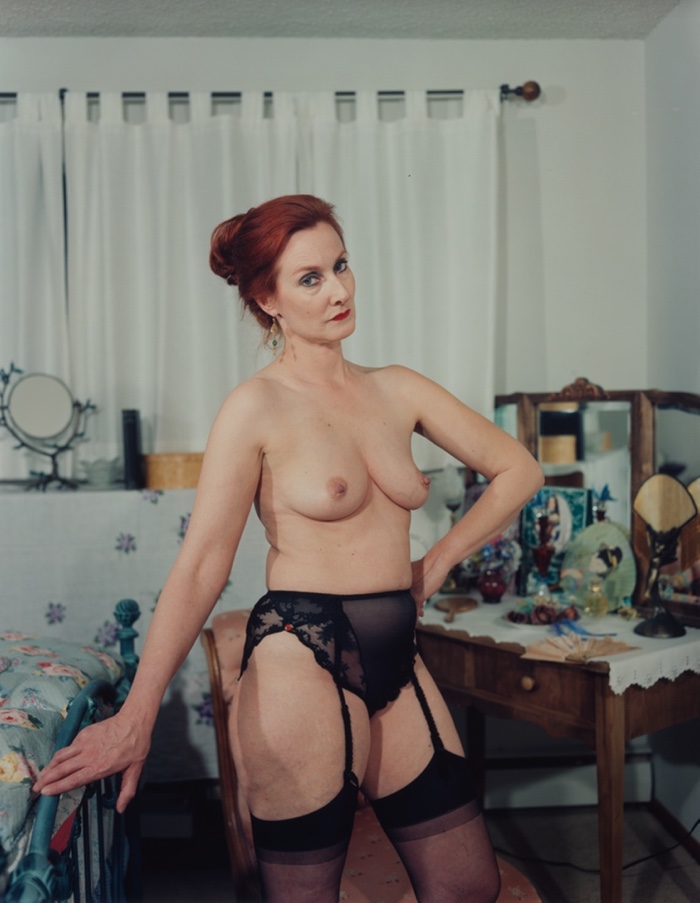
Leigh Ledare, Mom with Hand on Bed, 2006
Even though languages reflect the culture that developed them, the strong bond that unites a mother to her son is not a uniquely Italian phenomenon. MOTHERBOY, a group show currently open at Giò Marconi in Milan, transcends both Italian and Freudian clichés to investigate the relationship between mother and son across cultures and continents. Some of the works exhibited use irony, others are more provocative. Some works explore queer theory, others delve into themes of co-dependency, desire, hierarchies, possessiveness, vulnerability or feminism.
Patrizio di Massimo‘s King Charles, a crown on his head, is in tears. Jonathan Lyndon Chase recreated the kitchen where he used to spend hours chatting with his mother and the epitome of mummy’s boy, Leigh Ledare, portrays his mum in all her erotic glory. The exhibition is both unsettling and tender.
My review of the show will focus on the works of Jenna Sutela and Jes Fan because they both break up and broaden the intimate connection between a mother and her son by looking at the role that molecules and microorganisms play in turning us into not just individuals but interconnected and interdependent beings.
![]()
Jes Fan, Mother is a Woman (film still), 2018
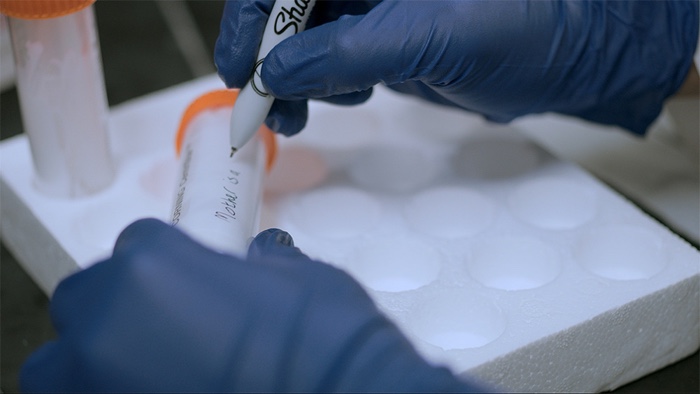
Jes Fan, Mother is a Woman (film still), 2018
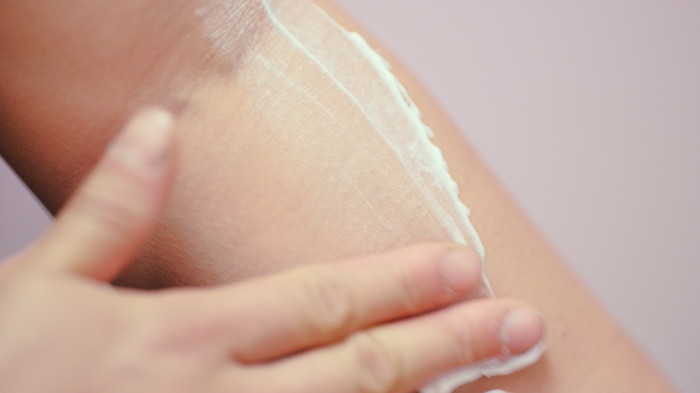
Jes Fan, Mother is a Woman (film still), 2018
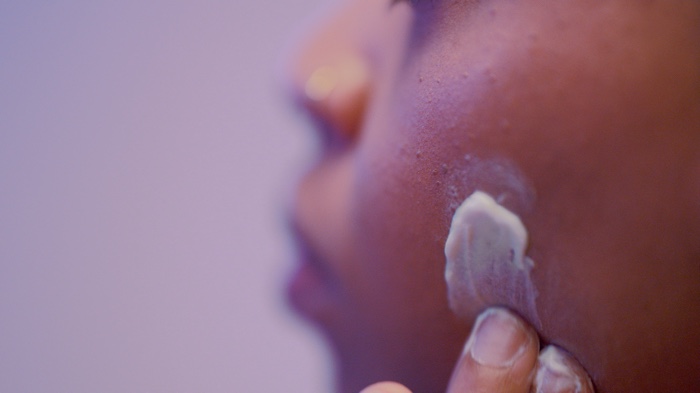
Jes Fan, Mother is a Woman (film still), 2018
Jes Fan, Mother is a Woman, 2018
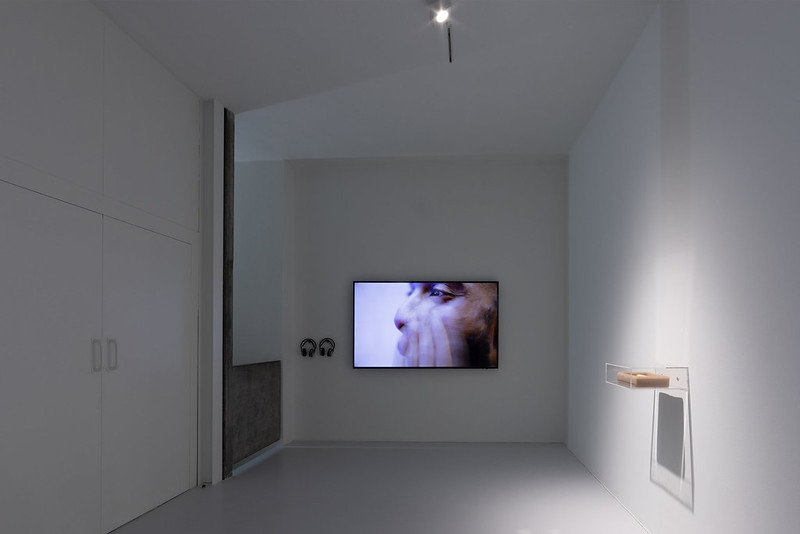
Installation view of the MOTHERBOY exhibition at Gió Marconi, Milan. Photo: Fabio Mantegna
Jes Fan’s video Mother is a Woman shows the fabrication of a beauty cream in a cryogenics lab. The star active ingredient of the cosmetic is estrogen sourced from Fan’s mother’s urine.
The artist flew to Hong Kong and convinced their mother to donate her urine for the project. To avoid any suspicion, they decanted the urine into small containers that wouldn’t exceed the maximum liquid quantities.
Mother Is A Woman asks viewers to consider what unexpected bonds of kinship might emerge if they spread the cream onto their skin. How would the contact with the mother’s hormones affect them? Both in terms of personal connection between people who have never met and in terms of gender biotechnological production. Can social attachments be bioengineered? If your body absorbs a woman’s estrogen, are you feminised by her?
The work engages with cultural taboos but it also points out the omnipresence of xenohormones in our life. Either of natural or synthetic origins, these compounds are able to activate the same endocrine receptors as their natural counterparts. Xenoestrogens in particular, are believed to disrupt the endocrine systems of mammals by mimicking the effects of oestrogens, potentially influencing gender and behaviour.
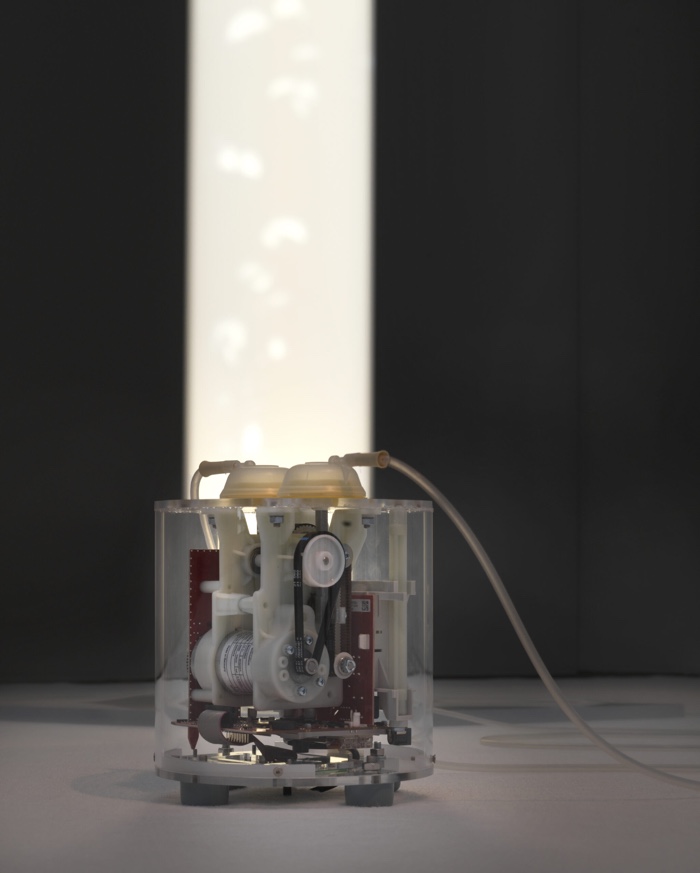
Jenna Sutela, HMO nutrix, 2022. Installation detail, Schering Stiftung. Photo: Jens Ziehe
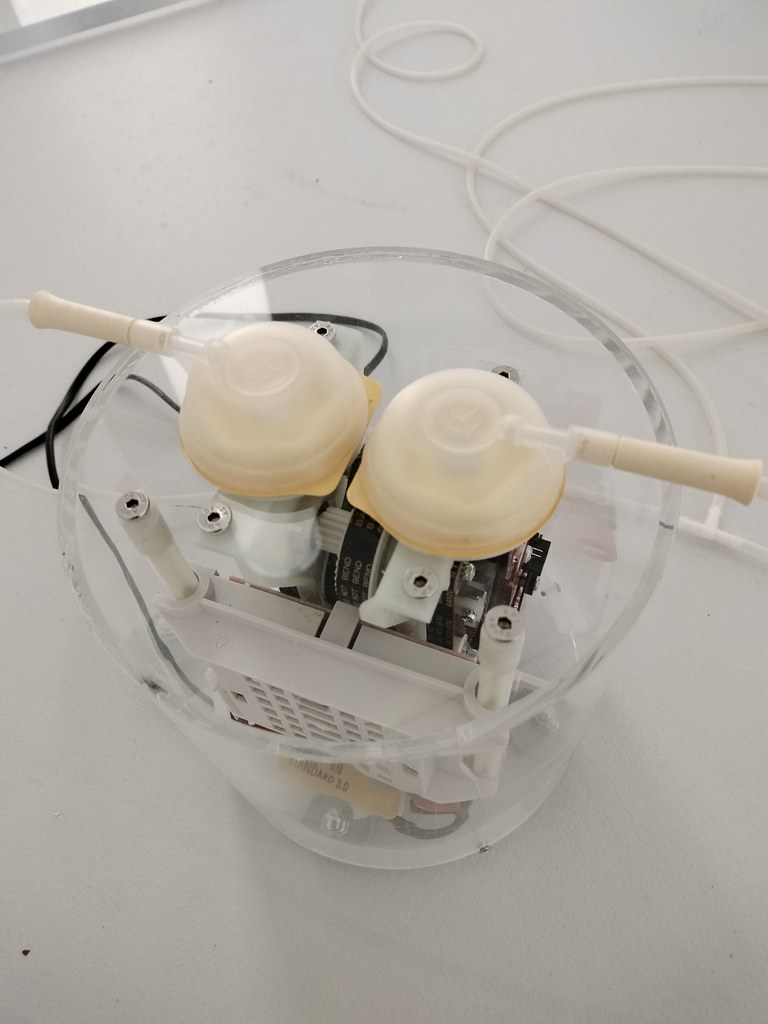
Jenna Sutela, HMO nutrix (detail), 2022
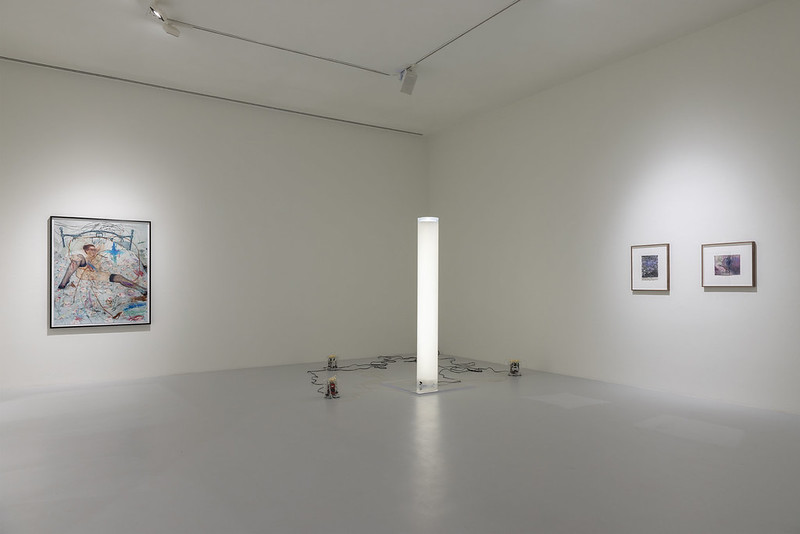
Installation view of the MOTHERBOY exhibition at Gió Marconi, Milan. Photo: Fabio Mantegna
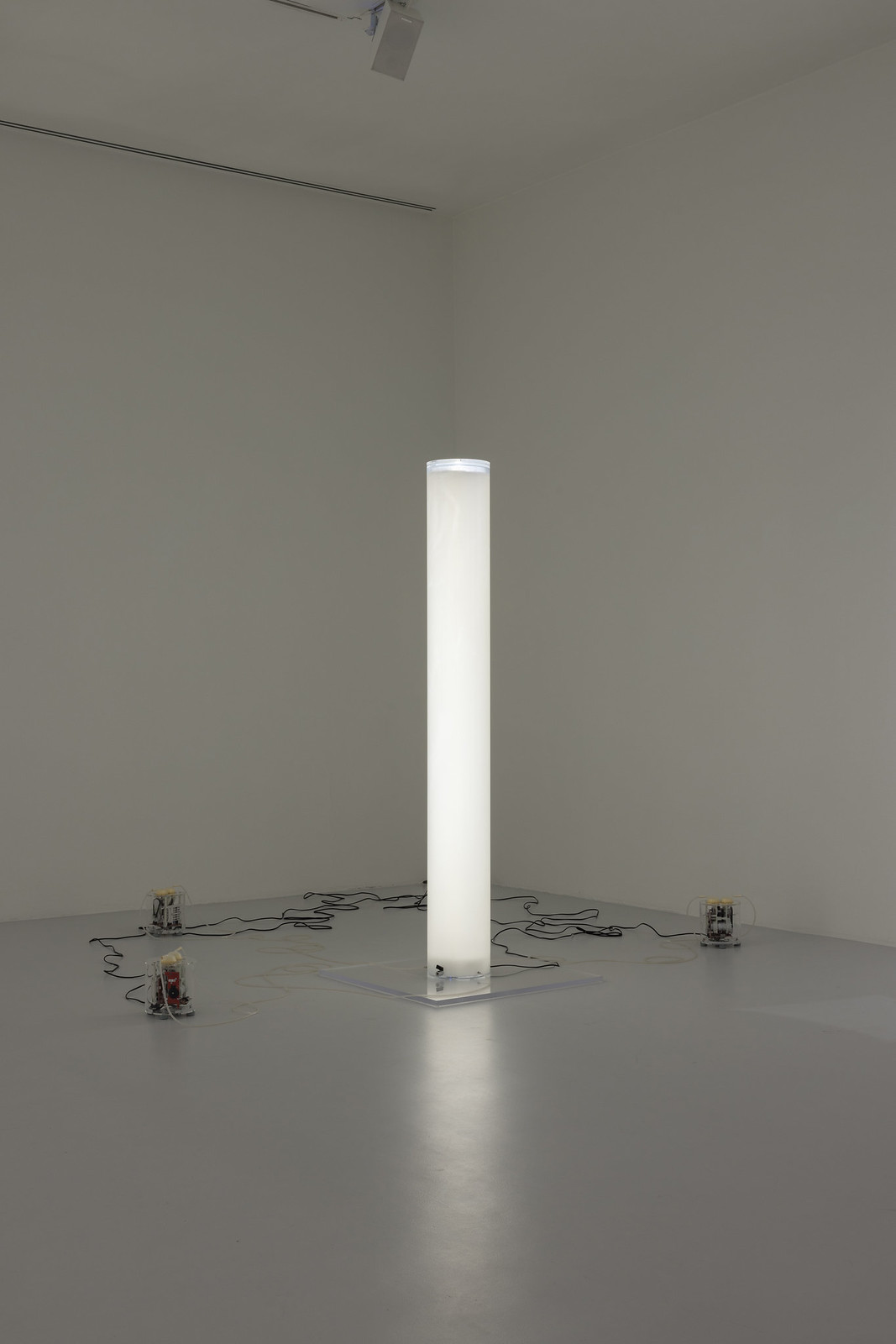
Installation view of the MOTHERBOY exhibition at Gió Marconi, Milan. Photo: Fabio Mantegna
HMO nutrix, by Jenna Sutela, is a two-meter-tall column powered by breast pumps and filled with synthetic breast milk that mimics human milk production. Its title refers to the exchange of bodily fluids between humans and microorganisms called human milk oligosaccharides (HMOs.) Essential compounds of breast milk, these bioactive carbohydrates nourish neonatal gut bacteria, promote the development of the nervous system and strengthen the intestinal immune system. Breast milk contains high amounts of HMOs whereas cow milk HMOs are at trace levels.
Such are the health benefits of HMOs that the food industry has been trying to reproduce the ingredients of breast milk in laboratories. Prebiotic HMO powders, capsules and other health-optimising supplements are available on the market, targeting adult customers who are eager to boost their gut health.
Sutela’s sculpture explores the scientific, political and poetic aspects of human breast milk. It also reminds us that we are part of a complex system of codependency and mutual influences where invisible and often overlooked microorganisms ensure our survival.
MOTHERBOY, curated by Stella Bottai and Gray Wielebinski, remains open until 17.02.2024 at the gallery Gió Marconi in Milan.
Previously: Open source estrogens and other hormonal tales, Leigh Ledare, an erotic family album, etc.
